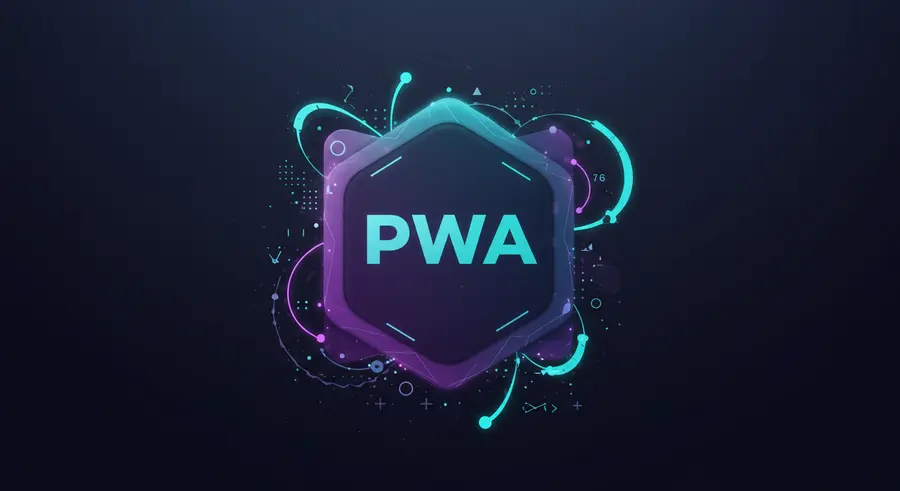Appearance

Welcome, fellow web enthusiasts! 👋 Today, we're not just scratching the surface of Progressive Web Apps (PWAs); we're diving deep into their advanced capabilities. You might already know that PWAs offer offline access and push notifications, blurring the lines between web and native apps. But what if I told you there's a whole universe of features waiting to be explored, transforming your web applications into truly powerful and engaging experiences?
Let's embark on this exciting journey to discover how to unleash the full potential of PWAs!
🌟 Beyond Basic Offline: Advanced Caching Strategies with Service Workers
Service Workers are the unsung heroes of PWAs, acting as a programmable proxy between the browser and the network. While basic caching gives you offline access, advanced strategies elevate performance and reliability:
- Cache-First, then Network: This strategy prioritizes speed. The Service Worker first checks the cache for a response. If found, it serves it immediately. If not, it fetches from the network. Ideal for static assets like CSS, JavaScript, and images.javascript
self.addEventListener('fetch', event => { event.respondWith( caches.match(event.request) .then(response => { return response || fetch(event.request); }) ); }); - Network-First, then Cache: For dynamic content that needs to be fresh, this strategy attempts to fetch from the network first. If the network is unavailable, it falls back to the cache.javascript
self.addEventListener('fetch', event => { event.respondWith( fetch(event.request) .catch(() => caches.match(event.request)) ); }); - Stale-While-Revalidate: A fantastic balance between speed and freshness. It immediately serves content from the cache (stale) while simultaneously fetching an updated version from the network (revalidate) to update the cache for future requests. Perfect for frequently updated content like blog posts or product listings.javascript
self.addEventListener('fetch', event => { event.respondWith( caches.open('my-dynamic-cache').then(cache => { return cache.match(event.request).then(response => { const fetchPromise = fetch(event.request).then(networkResponse => { cache.put(event.request, networkResponse.clone()); return networkResponse; }); return response || fetchPromise; }); }) ); });
📶 Seamless Operations with Background Sync
Imagine a user trying to send a message or submit a form while offline. Without background sync, the action would fail. The Background Sync API allows your PWA to defer actions until the user has a stable internet connection.
This means a user can click "Send" offline, close the app, and the message will be sent automatically once they regain connectivity. This significantly improves user experience and data integrity.
🔔 Interactive Notifications: Beyond Simple Alerts with Web Push
Push notifications are great for re-engaging users, but advanced features make them truly powerful:
- Notification Actions: Add interactive buttons directly within the notification, allowing users to perform quick actions like "Reply," "Archive," or "View Details" without opening the app.
- Rich Notifications: Include images, larger text, and even videos in your notifications for a more engaging experience.
- Payload Handling: Customize the data sent with your push notifications to drive specific app behaviors or display personalized content.
📱 Bridging the Gap: Device Hardware Integration with Web APIs
PWAs can tap into a surprising array of device capabilities, bringing them closer to native app functionality:
- Geolocation API: Access the user's location for map-based features, local recommendations, or tracking.
- Media Devices API: Utilize the device's camera and microphone for video calls, photo uploads, or voice recordings.
- Sensor APIs (Accelerometer, Gyroscope, etc.): Create immersive experiences or collect data for specific applications.
- Web Share API: Allows users to share content (text, URLs, files) from your PWA to other applications on their device, just like a native share sheet.
🔗 Elevating Sharing: The Web Share API
The Web Share API provides a standardized way for web applications to integrate with the platform's native sharing mechanism. This means your users can easily share links, text, and even files from your PWA to their contacts, social media, or other apps with a single tap. It's a game-changer for content-rich PWAs!
📝 Enriching User Experience with Web App Manifest Enhancements
The Web App Manifest is crucial for defining your PWA's appearance and behavior when installed. Go beyond the basics with these properties:
shortcuts: Define a list of quick actions that appear when the user long-presses the app icon on their home screen. This allows for instant access to key features.related_applications: If you have existing native apps, you can link them here, prompting users to install the native version if they prefer.display_override: Provides more control over how your PWA is displayed, such aswindow-controls-overlayfor custom title bars.
🔄 Keeping Fresh: Periodic Background Sync
While Background Sync handles one-off tasks, Periodic Background Sync allows your PWA to fetch fresh content at regular intervals, even when the app isn't actively running. Imagine a news PWA updating its feed every hour, or a weather app fetching the latest forecast. This keeps your content relevant and up-to-date for the user.
🔒 Seamless Authentication: Credential Management API
The Credential Management API streamlines the sign-in process by allowing your PWA to interact with the browser's credential manager. This enables features like:
- Auto-login: Users can be automatically logged in without typing their credentials.
- Account Chooser: If a user has multiple accounts, they can easily choose which one to use.
- Secure Credential Storage: Integrates with the browser's secure storage for enhanced security.
💳 Streamlined Transactions: Payment Request API
For e-commerce PWAs, the Payment Request API simplifies the checkout process. It provides a standardized interface for users to enter payment and shipping information, which can then be securely passed to your payment gateway. This reduces friction and improves conversion rates.
🌐 Discover More about PWAs!
This is just a glimpse into the vast potential of Progressive Web Apps. As web technologies continue to evolve, PWAs will become even more powerful and indispensable.
For more insights into the world of PWAs and other cutting-edge web technologies, be sure to check out our existing article: The Power of Progressive Web Apps (PWAs).
Stay tuned for more exciting deep dives into the future of web development! Happy coding! 🚀